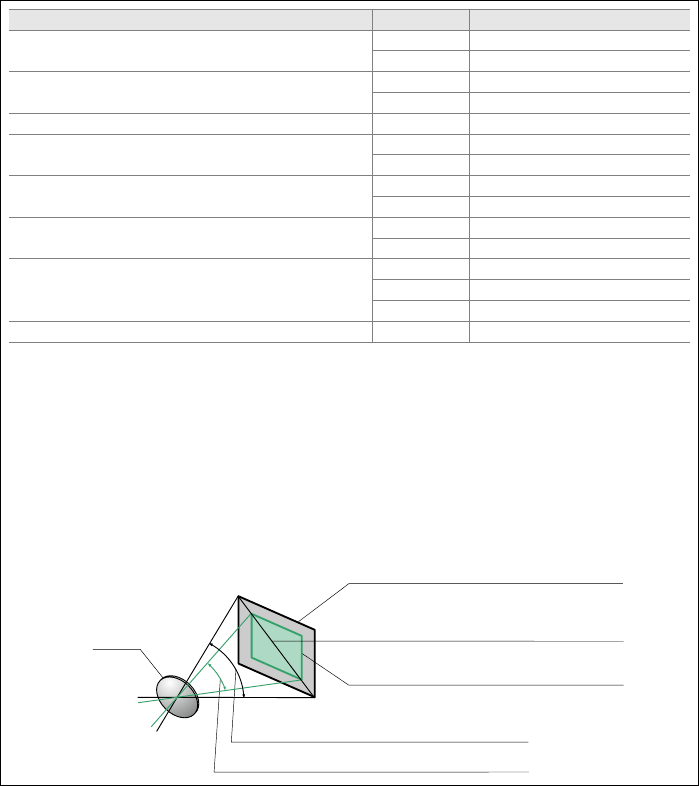
231Technical Notes
Lens Zoom position Minimum distance without vignetting
AF-S NIKKOR 24–70mm f/2.8G ED
35 mm 1.5 m/ 4 ft 11 in.
50–70 mm No vignetting
AF-S VR Zoom-Nikkor 24–120mm f/3.5–5.6G IF-ED
24 mm 1.0 m/ 3 ft 3 in.
28–120 mm No vignetting
AF-S NIKKOR 24–120mm f/4G ED VR 24 mm 1.5 m/ 4 ft 11 in.
AF-S Zoom-Nikkor 28–70mm f/2.8D IF-ED
35 mm 1.5 m/ 4 ft 11 in.
50–70 mm No vignetting
AF-S NIKKOR 28–300mm f/3.5–5.6G ED VR
28 mm 1.5 m/ 4 ft 11 in.
35 mm 1.0 m/ 3 ft 3 in.
AF-S VR Zoom-Nikkor 200–400mm f/4G IF-ED
250mm 2.5m/ 8ft 2in.
350 mm 2.0 m/ 6 ft 7 in.
AF-S NIKKOR 200–400mm f/4G ED VR II
200 mm 5.0 m/16 ft 5 in.
250mm 3.0m/ 9ft 10in.
300–400 mm No vignetting
PC-E NIKKOR 24mm f/3.5D ED
*
24 mm 3.0 m/ 9 ft 10 in.
* When not shifted or tilted.
When used with the AF-S NIKKOR 14–24mm f/2.8G ED, the flash will be unable to light the
entire subject at all ranges.
A Calculating Angle of View
The size of the area exposed by a 35mm camera is 36 × 24 mm.
The size of the area exposed
by the D5300, in contrast, is 23.5 × 15.6 mm, meaning that the angle of view of a 35mm
camera is approximately 1.5 times that of the D5300.
The approximate focal length of lenses
for the D5300 in 35mm format can be calculated by multiplying the focal length of the lens
by about 1.5.
Picture size (35mm format)
Lens
(36 × 24 mm)
Picture diagonal
Picture size (D5300)
(23.5 × 15.6 mm)
Angle of view (35mm format)
Angle of view (D5300)


















